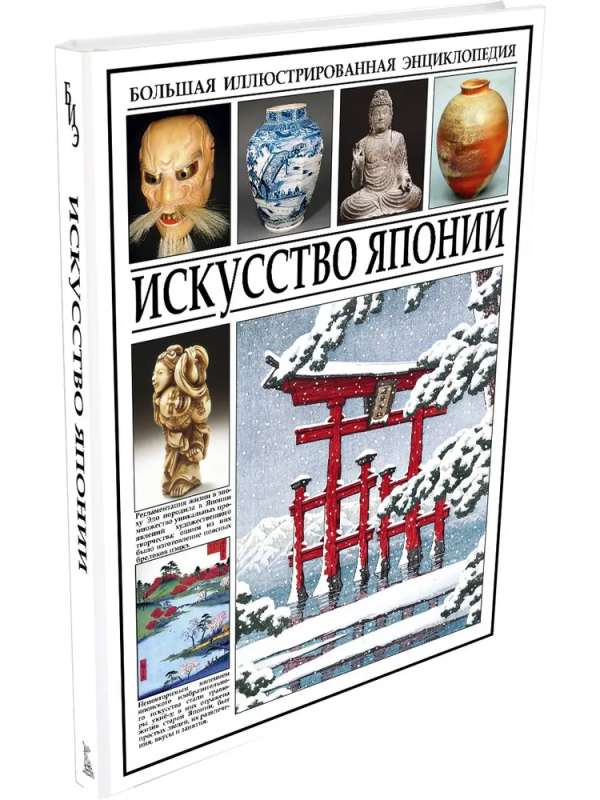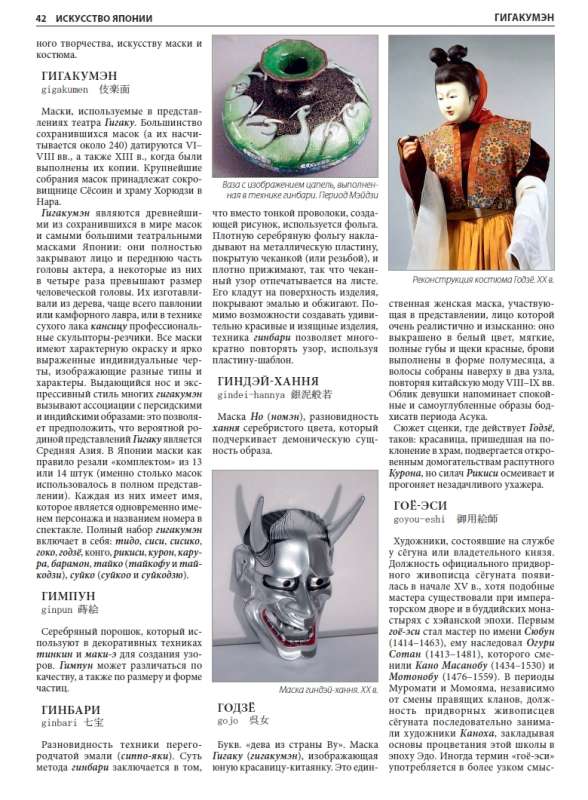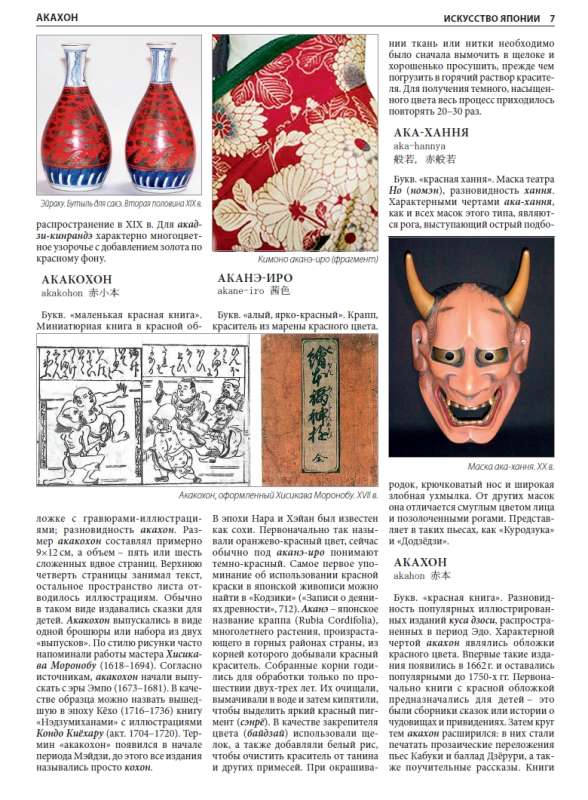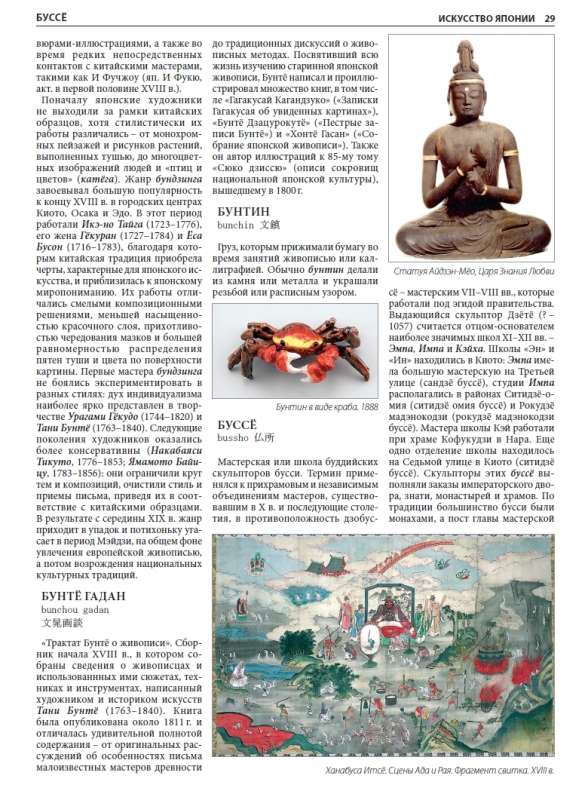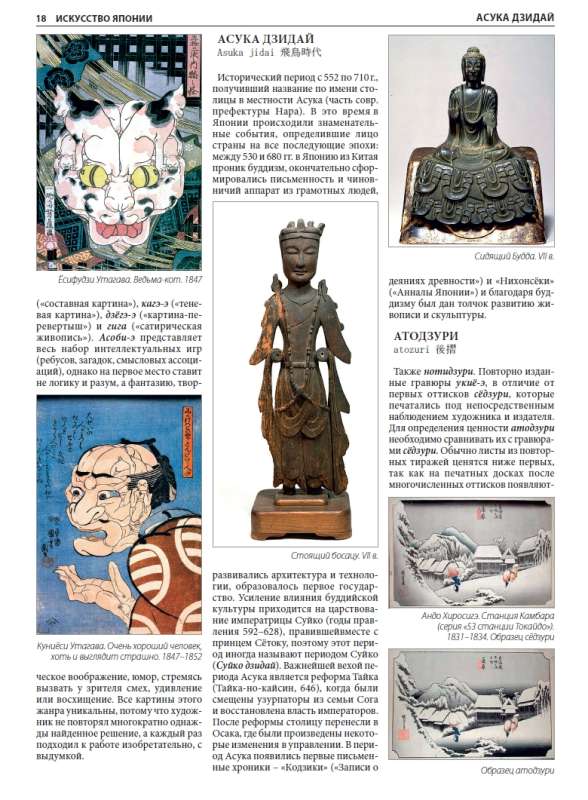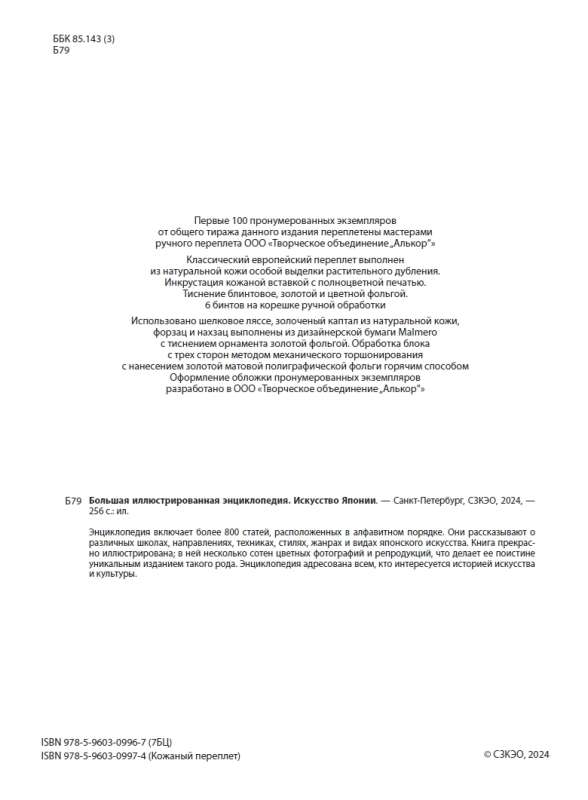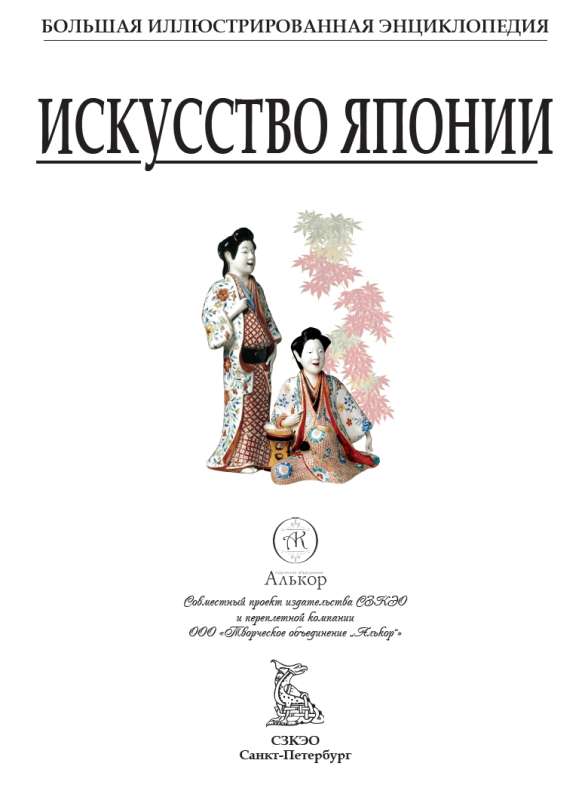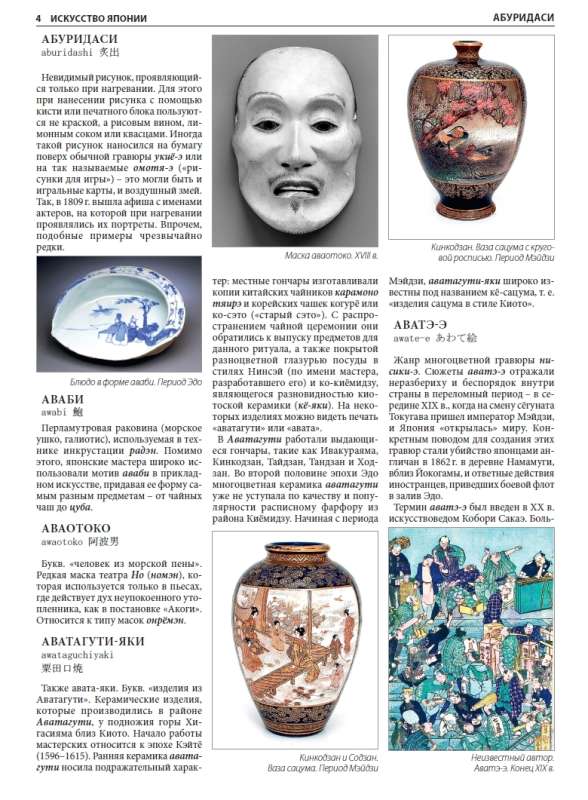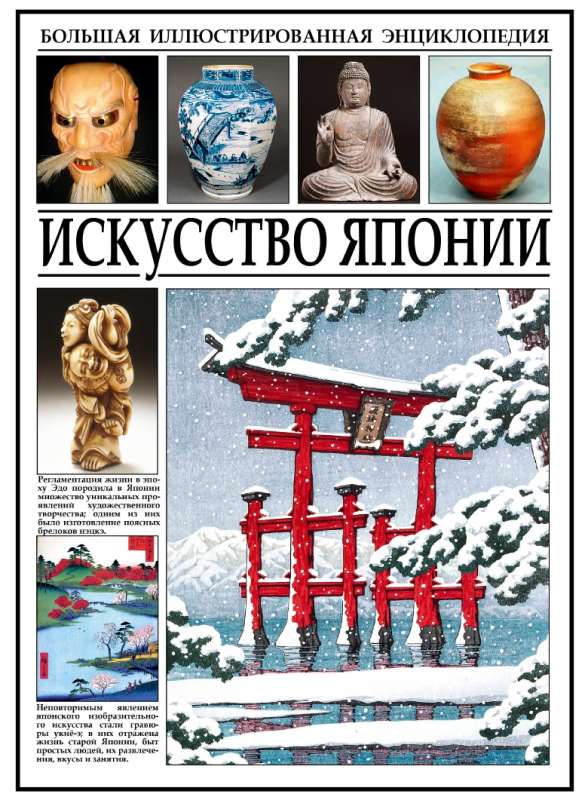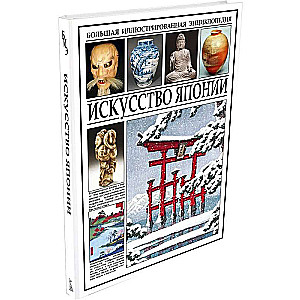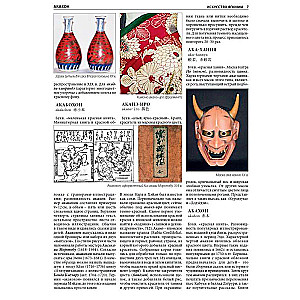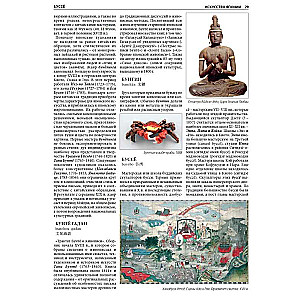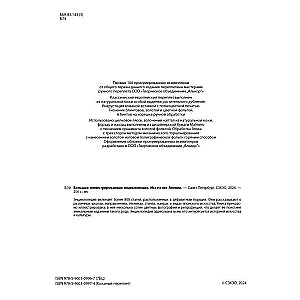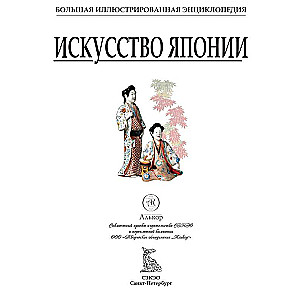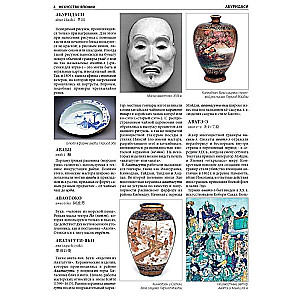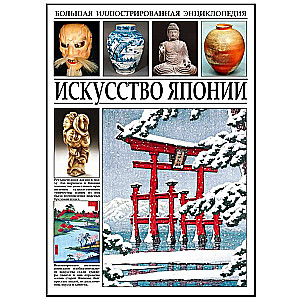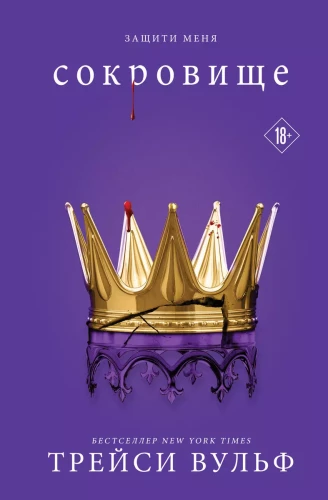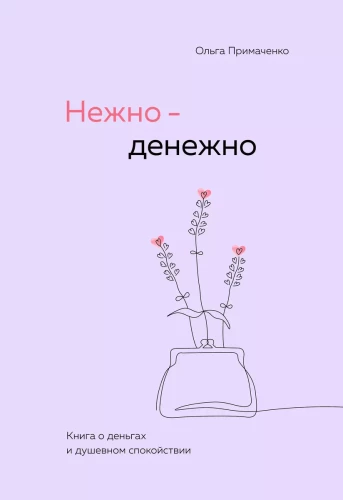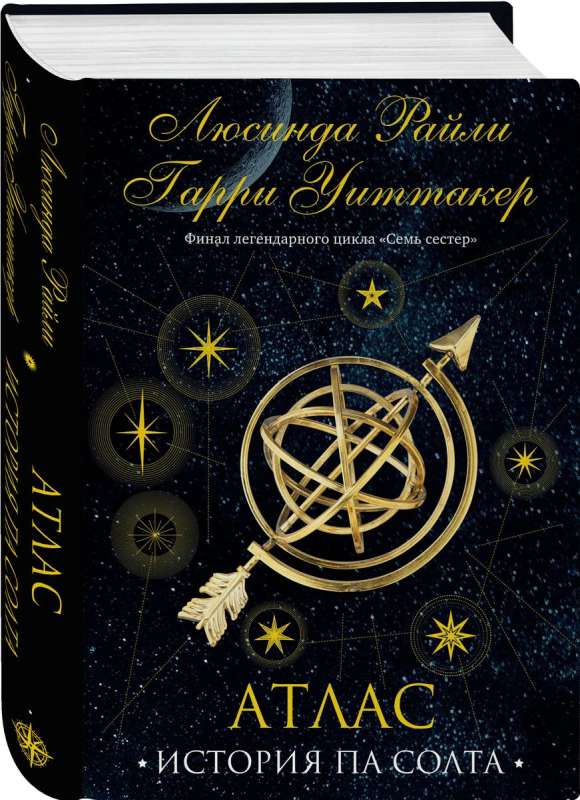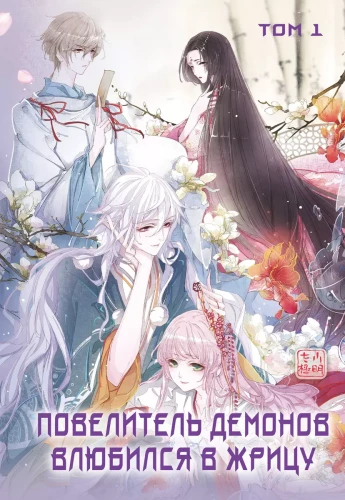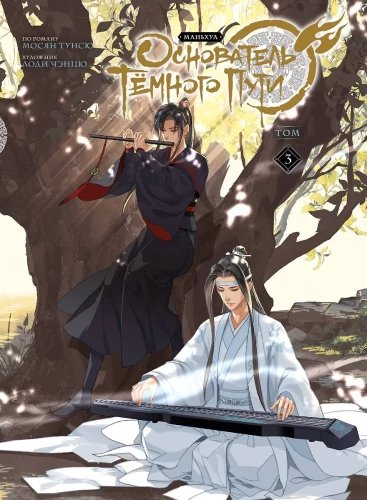The Art of Japan BIE
The encyclopedia includes over 800 articles arranged in alphabetical order. They tell about various schools, movements, techniques, styles, genres, and types of Japanese art. The book is beautifully illustrated; it contains several hundred color photographs and reproductions, making it a...
truly unique publication of its kind. The encyclopedia is aimed at everyone interested in the history of art and culture.
The Japanese people created a unique and inimitable world of artistic images. Absorbing diverse cultural achievements from China and Korea in ancient times, the Japanese reworked and enriched them, thereby laying the foundations of their individual artistic tradition. By the time of the Heian period (794-1185), the art and literature of Japan experienced an extraordinary flourishing. During this time, two systems of Japanese syllabary were created - katakana and hiragana; national styles and genres emerged in literature, painting, sculpture, architecture, lacquer ware, and weaving.
Buddhism and its numerous branches, which began to penetrate Japan from the 6th century, played a huge role in the development of traditional Japanese art. In the early 8th century, intensive construction of monasteries and temples began in the country, becoming centers of a new cultural tradition. Zen Buddhism penetrated literally into all areas of Japanese life, giving rise to the art of flower arrangement, the tea ceremony, Noh theater, and monochrome ink painting.
The isolation of the country from the outside world, which began to be enforced by the military dictators, the shoguns, from the early 17th century, gave a uniquely distinctive character to the development of various crafts, which is now highly valued throughout the world. For instance, the strict regulation of men's clothing patterns led to the flourishing of the art of making cord ornaments - netsuke, the themes of which began to reflect Japanese history, mythology, as well as many realities of Japanese life during the late feudal period. During this time, merchants and craftsmen began to see art as a way to break free from the rigidly regulated confines into which their social life had been squeezed. Earthly life with its "simple" joys became increasingly valuable to townspeople. It is no coincidence that during this time, haiku - short three-line poems, in which any resident of the country could participate, became extraordinarily popular in poetry.
At the same time, Japan developed a unique artistic phenomenon known in history as ukiyo-e. These were widely reproduced woodblock prints; they were cheap and therefore accessible to broad layers of the population. At the same time, their artistic level was quite high due to the unique creative union of artists, carvers, and printers. Ukiyo-e expressed a new ideology and morality of craftsmen and merchants, among whom a new understanding of beauty was forming. These "pictures of a changing world" broke the old feudal norms and traditions. For artists and craftsmen, the spiritual world of the ordinary person, their daily cares and experiences became a source of artistic inspiration. Illustrated books, albums with prints, and individual sheets - these three main types of ukiyo-e prints - existed for two centuries. During this time, traditional genres of Japanese painting - landscapes, flowers, and birds - found their new interpretation. Abstract images in the Chinese style were replaced by concrete depictions of native nature, celebrating its beauty and grandeur. Artists became attracted to the everyday life of the city, the poetry of its weekdays, which was understandable to any resident of a large settlement. It is not by chance that in the 19th century, when the country opened up to the world again, Japanese prints in the ukiyo-e style became popular in Europe. Their aesthetics had a profound influence on the formation of Impressionism, on the works of Edgar Degas, Claude Monet, Vincent van Gogh, and through Impressionism on all European painting of the late 19th - early 20th centuries. This beautifully illustrated encyclopedia with several hundred color photographs and reproductions is a unique book. It contains over 800 articles that tell about various schools, movements, techniques, styles, genres, and types of Japanese art.
Author: СЗКЭО
Printhouse: SZKEO
Series: BIE
Age restrictions: 0+
Year of publication: 2024
ISBN: 9785960309967
Number of pages: 256
Size: 250x340x25 мм mm
Cover type: Твердый переплет
Weight: 1700 g
ID: 1630160
free
€ 9.99
free from € 80.00
free
€ 9.99
free from € 80.00
-
MNOGOKNIG Gmbh, Frederichstrasse 176-179, Berlin, Germany, 10117+4915205421866
